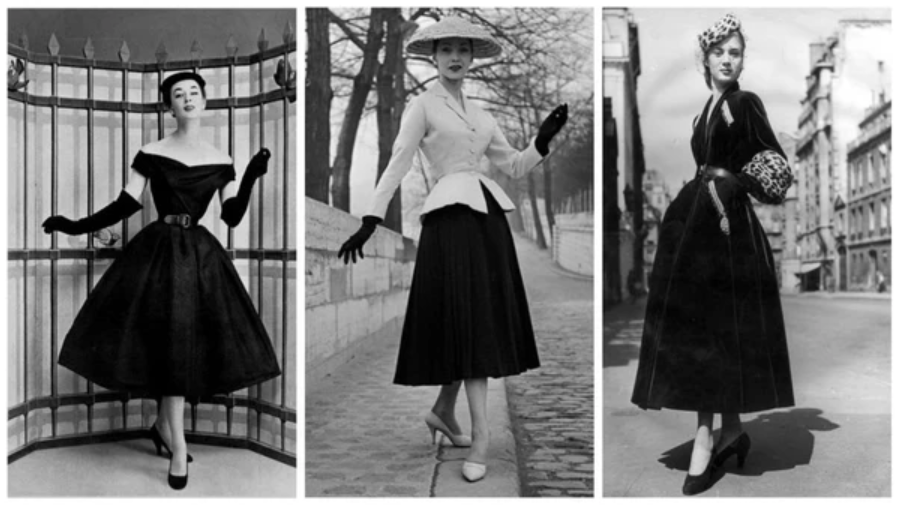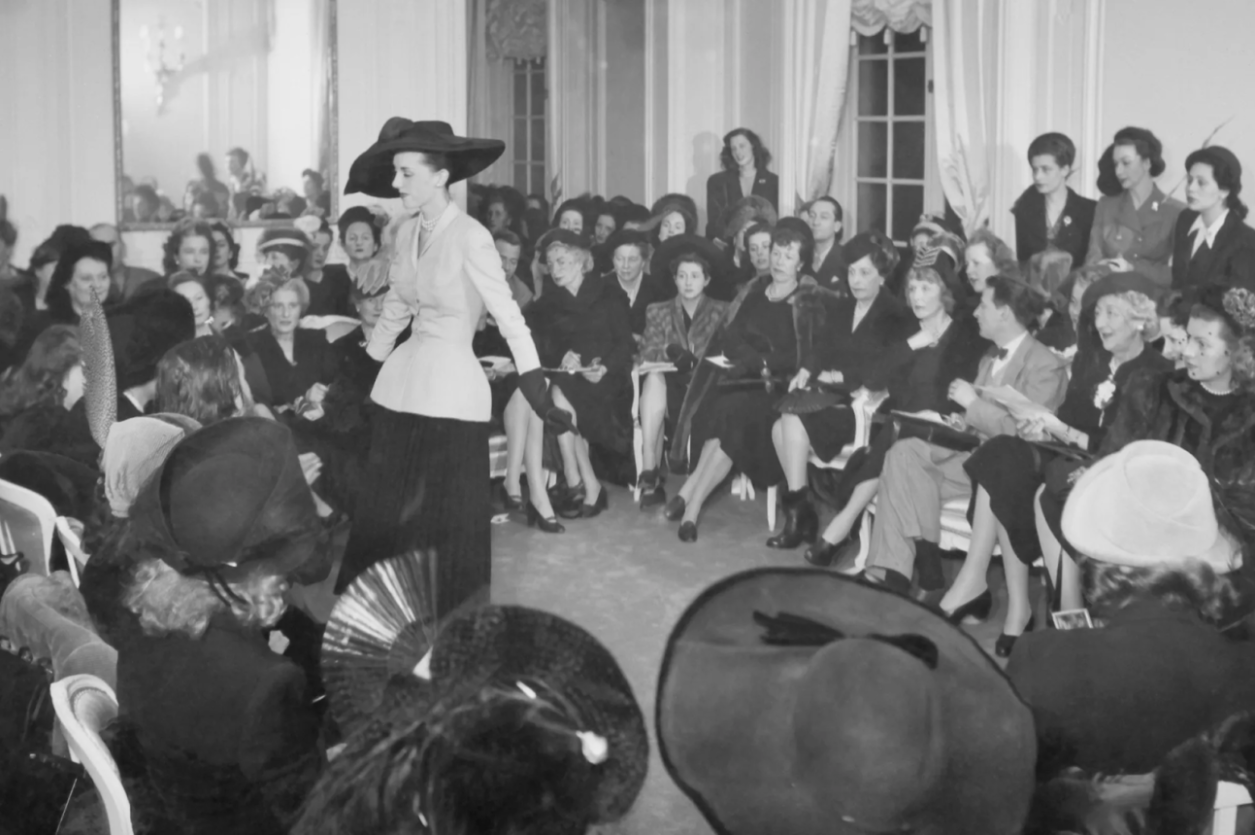Dressing the Wound
Nico Gurdjian
February 1947. Two years after the official end of the Second World War, Paris still bore scares of occupation: crumbling facades, ongoing rations, and a thin national psyche from years of thinking only of survival. Breadlines wound through districts that had once thrived on conversation in cafés.
Yet inside 30 Avenue Montaigne, models wore silk and taffeta, their flowing skirts meters wide. Christian Dior's new silhouettes were dramatic: narrow shoulders, tight corseted waists, full skirts. These creations stood in direct opposition to the wartime utility dressing. The collection required an average of 20 yards of fabric per each garment while most of France was still darning socks and altering old clothes.
The public took it as an insult, this indulgence. However, Dior’s collection, “New Look,” was not birthed in ignorance of austerity. It was built against it. The designs were reinstating a pre-war vision of femininity where function was downplayed in favor of artifice. Clothes not meant for modern working women; they restricted movement. They served no purpose beyond the power of their presentation. He was reintroducing luxury as an aesthetic and ideology.
Critics were swift in snipping away the vision, in both England and America where rationing was also continuing. They accused Dior of erasing the practical, self-sufficient, unadorned “wartime woman.” They said he had ignored the realities of postwar austerity, the women in trousers who welded in factories and wrapped children in wool blankets to hide from air raids. They despised his retreat into the past, but he was trying to find an assertion of beauty to counterbalance the ruins. His silhouettes exaggerated the female form as an aesthetic rebellion. If destruction of his country had been efficient, then elegance would now be excessive.
The “New Look” functioned like the body of a theatre. The images of the designs entered public consciousness not as accessible fashion, couture wasn’t meant to be, but as a spectacle of something radically ornamental that could still be imagined in the aftermath of such tragedy.
Where the war had reduced, Dior expanded. Politics restrained and he offered a curvature to a new mode of resistance. Stitched in silk and entirely incompatible with the world outside the atelier. The “New Look” was a provocation, where war had streamlined the human body into function—helmets, boots, plain uniforms—Dior found a new grandeur. The Vichy regime (1940-1944) promoted the ideal of a national identity based on traditionalism, duty, and submission. Dior refashioned tradition as fantasy with a style that made no compromises with practicality because he was reclaiming the very idea of useless beauty.
France in 1947 was caught between past and future; the Fourth Republic (1946-1958) had begun and was weakened by ideological fractures and colonial entanglements. France was negotiating a place between American capitalism and Soviet pressure.
At this tense moment—between rebuilding and reimagining—Dior offered fantasy and myth through fashion. A couture mythology that showed a vision of France as the cradle of elegance, even if it was impossible and impractical, detached from the working realities of most citizens. It was political symbolism: a retreat into autocracy with a monarchic silhouette reintroduced, or an act of soft power with fashion as diplomacy to affirm France as the epicenter of style even with streets lined with ash and debris.
The “New Look” had luxury as a confrontation with architectural precision not of nostalgia, but a defiance dressed as memory. Not meant to be lived in, but dreamt of. His fashion was not political because it responded to war, but because it insisted on something after war. In a country that had seen the efficiency of destruction, his collection showed possibility.
Strike Out,
Nico Gurdjian
Born and raised in Miami, she is studying Psychology/Pre-Med at FIU. She likes creation myths, piano sonatas, puppet shows, and comic books. She dislikes serious letterboxd reviews, Green’s theorem, the Sicilian Defense, and whispering.




